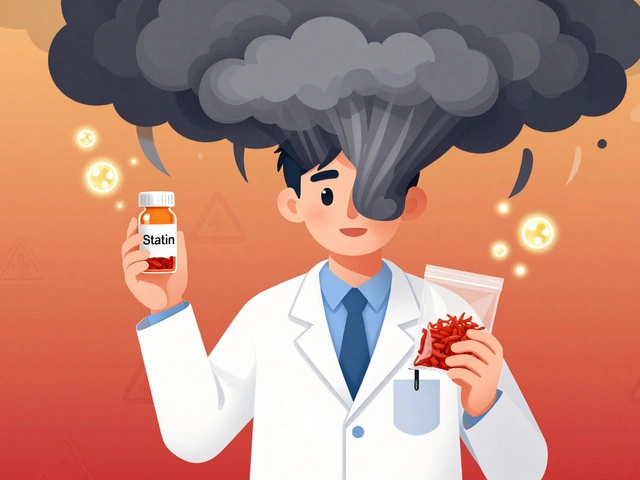Clinical Trial Phase Guide for Chromosome-Positive ALL
Phase I
Focuses on safety and determining safe dosage levels.
20-80 patientsPhase II
Tests effectiveness and monitors side effects.
100-200 patientsPhase III
Compares new treatment to current standard care.
300-600 patientsHow Trials Progress for Chromosome-Positive ALL
For chromosome-positive ALL, trials often move quickly from Phase II to Phase III because early results show strong BCR-ABL1 inhibition. This rapid progression allows promising treatments to reach patients sooner.
Key points:
- Phase I focuses on safety and finding the right dose
- Phase II shows if the treatment works
- Phase III confirms it's better than standard care
- Accelerated approval pathways allow faster access to promising drugs
Recent Breakthroughs from Clinical Trials
Three major advances have transformed treatment:
- Second-generation TKIs like dasatinib and nilotinib improved survival rates
- CAR-T cell therapy targeting CD19 helped patients who failed previous treatments
- Combination regimens with bispecific antibodies reduced relapse rates
These breakthroughs came from carefully designed trials with strong safety monitoring.
Finding Trials
Use these resources to find eligible trials:
- Ask your oncologist for local studies
- Search ClinicalTrials.gov
- Check academic consortiums like COG
- Look for travel support programs
Patient Safety & Rights
Trial participants are protected by:
- Informed consent
- Independent monitoring committees
- Right to withdraw anytime
- Privacy protections
Always ask questions before joining any trial.
Key Takeaway
Clinical trials are essential for turning new discoveries into effective treatments for chromosome-positive ALL. They provide hope for better outcomes and help shape future therapies.
When a diagnosis of chromosome‑positive lymphoblastic leukemia lands on a patient’s desk, the word “trial” can feel both hopeful and intimidating. The truth is that every new drug, every refined dosing schedule, and every breakthrough survival statistic traces back to a clinical trial. Understanding why these studies matter, how they’re built, and what they’ve already delivered can turn uncertainty into a roadmap for treatment options.
What Is Chromosome‑Positive Lymphoblastic Leukemia?
Chromosome‑positive lymphoblastic leukemia is a subtype of acute lymphoblastic leukemia (ALL) that carries a specific genetic abnormality, most commonly the Philadelphia chromosome (t(9;22)(q34;q11)). This translocation creates the BCR‑ABL1 fusion gene, which drives uncontrolled cell growth. About 25‑30% of adult ALL cases and a smaller fraction of pediatric cases fall into this category, and the presence of the fusion gene historically signaled a poorer prognosis.
Why Clinical Trials Matter for This Subtype
Clinical trials are the systematic engine that moves medicine from static textbooks to dynamic, life‑saving options. For chromosome‑positive ALL, they serve three critical roles:
- Validation of targeted therapies: Drugs that specifically inhibit BCR‑ABL1, such as tyrosine kinase inhibitors (TKIs), need rigorous testing to prove they improve survival without excessive toxicity.
- Exploration of combination regimens: Adding immunotherapies like CAR‑T cells or monoclonal antibodies to standard chemotherapy can reshape the therapeutic landscape, but only trials can sort out optimal dosing and timing.
- Safety and long‑term outcomes: Because many patients are young, long‑term side‑effects matter. Trials collect data that inform survivorship guidelines for decades.
How Clinical Trials Are Structured
Understanding a trial’s phase helps patients gauge where a drug sits on the development curve.
| Phase | Goal | Typical Sample Size | Primary Endpoint |
|---|---|---|---|
| Phase I | Safety & dose‑finding | 20‑80 patients | Maximum tolerated dose |
| Phase II | Efficacy signal | 100‑200 patients | Response rate |
| Phase III | Confirm benefit vs standard | 300‑600 patients | Overall survival |
For chromosome‑positive ALL, many trials leap from Phase II to Phase III quickly once early data show strong BCR‑ABL1 inhibition. The FDA’s accelerated approval pathway also lets promising TKIs reach patients faster, provided confirmatory Phase III studies follow.

Recent Breakthroughs Driven by Trials
In the past five years, three trial‑derived advances have reshaped standard‑of‑care:
- Second‑generation TKIs (e.g., dasatinib, nilotinib) proved superior to imatinib in the AALL1131 and PhALL trials, lifting five‑year disease‑free survival to ~70%.
- CAR‑T cell therapy targeting CD19 showed durable remissions in the ELIANA and BMT‑CT03 studies, even for patients who failed multiple TKIs.
- Combination regimens that pair a TKI with a bispecific antibody (blinatumomab) in the GIMEMA trial cut relapse rates in half compared with chemotherapy alone.
These results didn't appear out of thin air; each stemmed from tightly designed protocols, independent data‑monitoring committees, and patient advocacy groups pushing for faster enrollment.
How to Find and Enroll in a Trial
Finding the right trial can feel like searching for a needle in a haystack, but a few practical steps streamline the process:
- Ask your hematologist for a list of ongoing studies at major cancer centers (e.g., Memorial Sloan Kettering, MD Anderson, Peter MacCallum).
- Check national registries like ClinicalTrials.gov or the Australian New Trials Portal. Filter by “Philadelphia chromosome”, “ALL”, and “Phase II/III”.
- Look for trials sponsored by academic consortia (e.g., the Children’s Oncology Group) rather than industry alone, as they often have broader eligibility criteria.
- Consider travel support programs-many pharmaceutical sponsors reimburse mileage, lodging, and even a stipend for caregivers.
Before signing up, patients should review the trial’s inclusion/exclusion criteria, expected visits, and potential risks. A well‑prepared question list includes:
- What is the investigational drug’s mechanism?
- How many participants have already been treated?
- What happens if I experience severe side‑effects?
- Will I receive standard‑of‑care therapy if the trial ends early?
Safety, Ethics, and Patient Rights
All trials involving chromosome‑positive ALL adhere to strict ethical standards set by the National Institutes of Health (NIH) and local Institutional Review Boards (IRBs). Key protections include:
- Informed consent: Participants receive a plain‑language document outlining purpose, procedures, risks, and alternatives.
- Independent data‑safety monitoring committees that can pause or stop a study if safety thresholds are crossed.
- Right to withdraw at any time without penalty or loss of standard care.
- Privacy safeguards under HIPAA (U.S.) or the Australian Privacy Act.
Understanding these safeguards helps demystify trial participation and empowers patients to make informed choices.

Future Directions: What’s on the Horizon?
Even with recent breakthroughs, researchers eye several next‑generation strategies:
- Allosteric BCR‑ABL1 inhibitors: Early‑phase trials of asciminib show activity against TKI‑resistant mutations.
- Dual‑target CAR‑T cells: Combining CD19 and CD22 receptors may prevent antigen‑escape relapses.
- Gene‑editing approaches: CRISPR‑based correction of the BCR‑ABL1 fusion is still pre‑clinical but holds long‑term curative potential.
- Personalized MRD‑guided therapy: Minimal residual disease (MRD) monitoring is being used to taper or intensify treatment in real time, as shown in the COG‑AALL1731 trial.
Each of these avenues depends on robust trial enrollment, transparent data sharing, and continued collaboration across continents.
Key Takeaways
Clinical trials are not just academic exercises; they are the lifeline that transforms chromosome‑positive lymphoblastic leukemia from a grim diagnosis into a treatable condition with improving survival odds. By knowing how trials are designed, where recent successes originated, and how to safely join a study, patients and families can turn uncertainty into proactive treatment planning.
Frequently Asked Questions
What does “chromosome‑positive” mean in leukemia?
It indicates that the cancer cells carry a specific genetic abnormality, most often the Philadelphia chromosome, which creates the BCR‑ABL1 fusion gene that drives the disease.
How are clinical trials for this leukemia type recruited?
Recruitment typically occurs through hematology/oncology clinics, national trial registries, and patient advocacy networks. Eligibility hinges on age, disease stage, prior therapies, and specific genetic markers.
Will I receive standard chemotherapy if I join a trial?
Most early‑phase studies add the investigational drug to standard chemotherapy, so you still get proven therapies while the new agent is evaluated.
What are the common side‑effects of TKIs used in these trials?
Typical side‑effects include mild nausea, muscle cramps, and elevated liver enzymes. Serious events such as cardiovascular complications are rare but monitored closely.
Can I travel for a trial if I live far from a major center?
Many sponsors offer travel reimbursements, and some trials partner with local hospitals for remote monitoring, reducing the burden of long‑distance travel.
How long does it take for a trial drug to become standard care?
If a Phase III trial shows a clear survival benefit, regulatory approval can follow within 12‑18 months, after which guidelines are updated.
What happens if a trial is stopped early?
Stopping can occur for safety concerns or if the drug proves overwhelmingly effective. Participants are usually offered the best available standard therapy or the investigational drug under a compassionate‑use program.




Juan Sarmiento on 6 October 2025, AT 14:46 PM
Wow, what an empowering overview! Reading about each phase felt like watching a relay race where every runner hands the baton of hope to the next. It’s amazing how safety checks in Phase I lay the groundwork for life‑saving breakthroughs in Phase III. Keep sharing these insights-they light the way for patients and families navigating this tough journey.